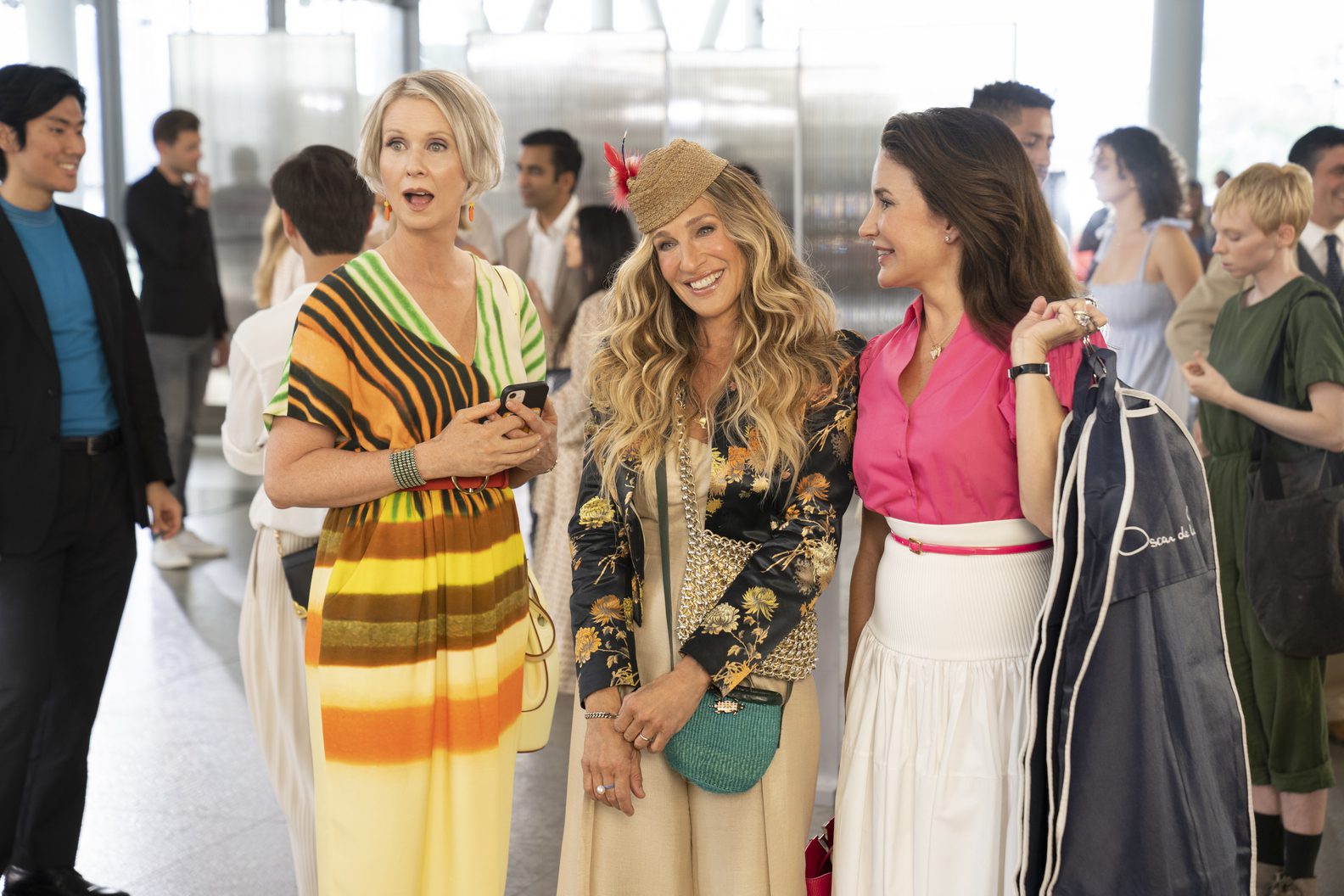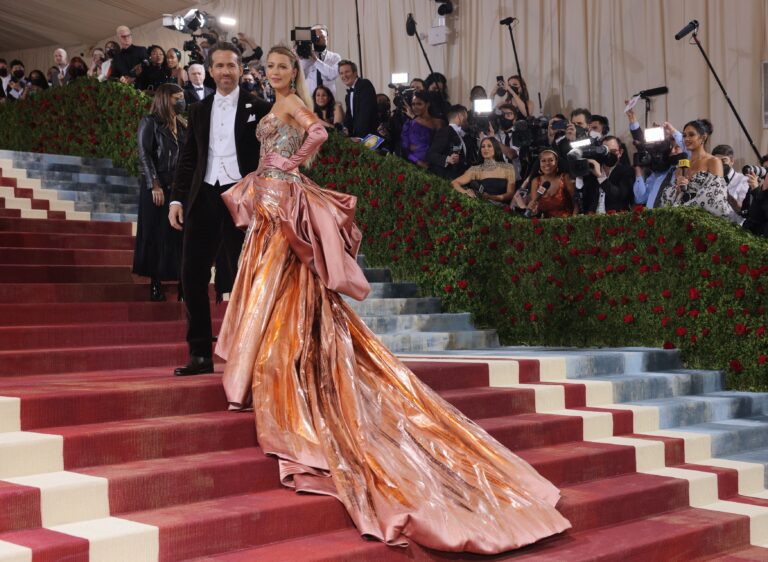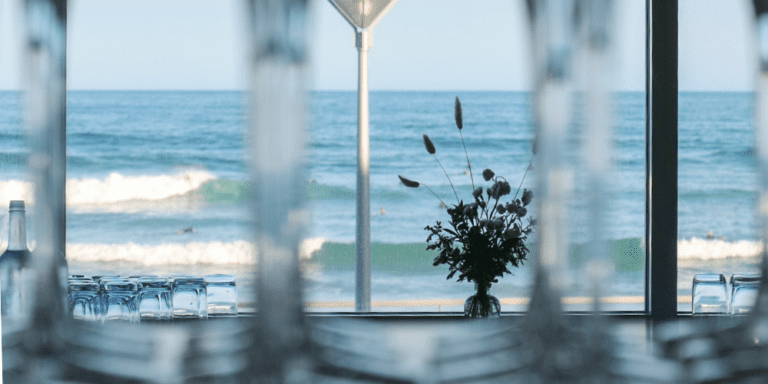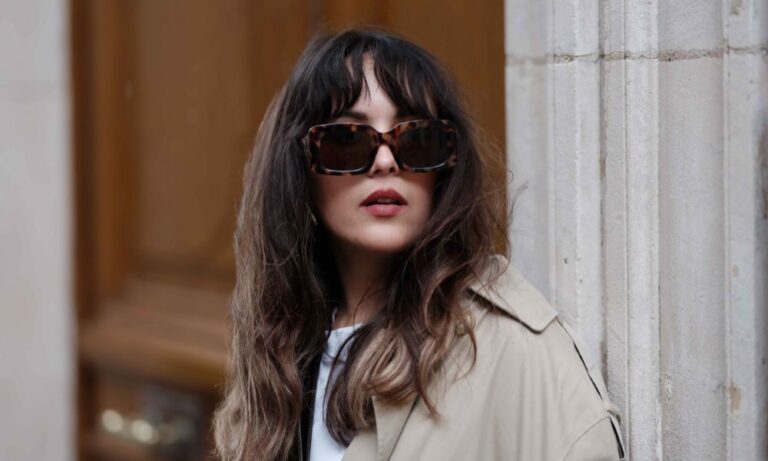Molly, also known for outfitting the women in The Devil Wears Prada, is synonymous with Sex and the City since it began back in 1988 and has seen the wardrobe – and our favourite actresses – evolve over more than three decades.
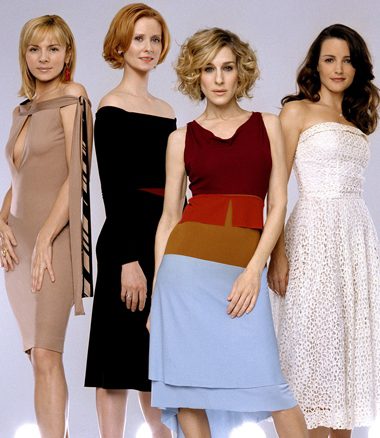
Let’s start with the evolution of the show and how the women’s style has changed. How did you bring them from the 80s to 2022?
They are such archetypes and I don’t think there’s much wiggle room but I think the person who has changed the most is Miranda. She has a different hair color for one, so that was a big clue and something fun to work with but I felt like my idea for the new show was just to modernise. The older you get, you know what looks good on you, and you don’t experiment as much. Not that you’re set in your ways, but you just have this kind of uniform, I guess. And that was fun to play with and to see what was new out there. But overall, they’ve pretty much stayed in their lanes. Charlotte as the polished Upper East Side, Carrie as the whimsical, experimental New Yorker. And Miranda, because she isn’t a lawyer anymore is a little more relaxed in the tailoring.
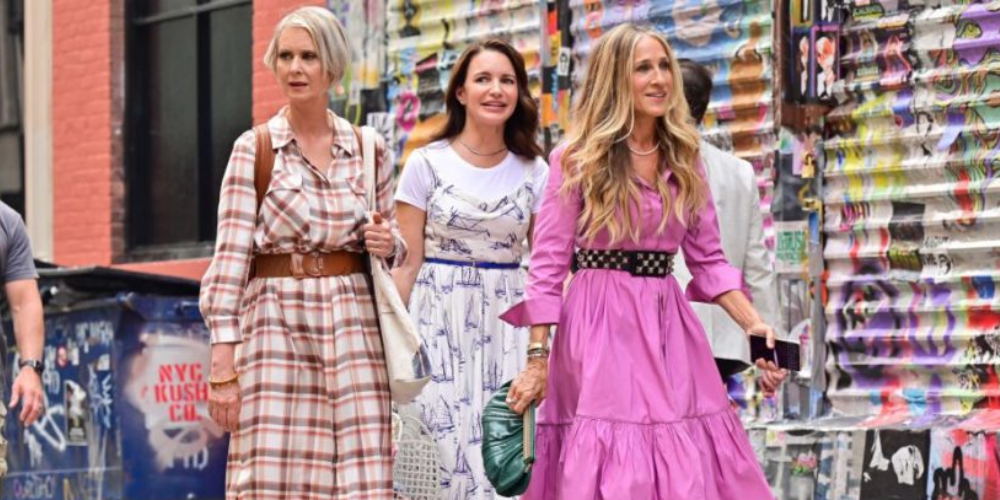
What are the challenges in dressing the ladies now that they’re a little older? Did they make any suggestions or did they insist on any limits to what they will or won’t wear?
Because I hate numbers myself, I like to ignore my number and so I tried to ignore their number. I didn’t think there was anything constrictive about 55. I don’t care if you’re 25 or 55, we all have areas that we prefer to get in better shape or whatever. But no one came into the fitting room with issues. We just put together outfits that they felt confident in. Then it was good-to-go and it went to camera. I cannot believe how fortunate I am that I was on the original series because we had a system set up in the fitting room, and it invites collaboration. It’s really helpful to put together costumes with the actor when they know what they’re doing. It’s really fun and it elevates the experience. Actually, sometimes it elevates what you had in mind originally.
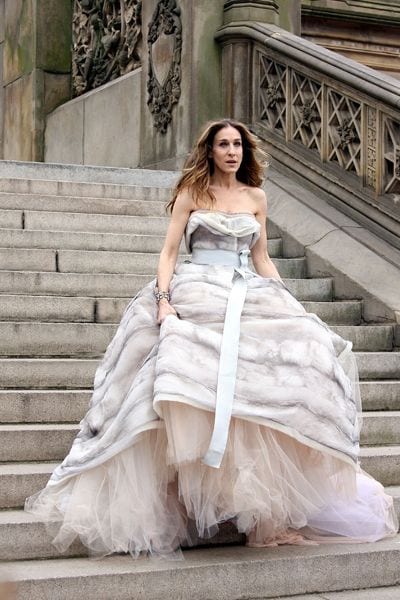
What happens to the clothes? Are they archived?
Sarah Jessica has kept an archive of a lot of her original outfits from the original television series and the two movies. So, that was something that I could pull from. That was really a wonderful place to go because I knew that a lot of fans of the show consider some of the accessories their friends. And they wanted to see that long-lost friend that they hadn’t seen in a while, like a blue Manolo that she got married in, or the Roger belt. So S.J. granted me access to her archives and I went and cherry-picked.
It was like an Easter egg for fans of the show. She’s pretty much the only one who has really hoarded her clothes, which I think is a wonderful, wonderful thing. She can definitely have a museum show one day but most of the clothes for the three women, they get to keep them if they like them. There’s a lot of loaned things that have to go back. We don’t own all those Chanel bags. Right now, they’re all in storage, awaiting news of the pickup or no pickup.
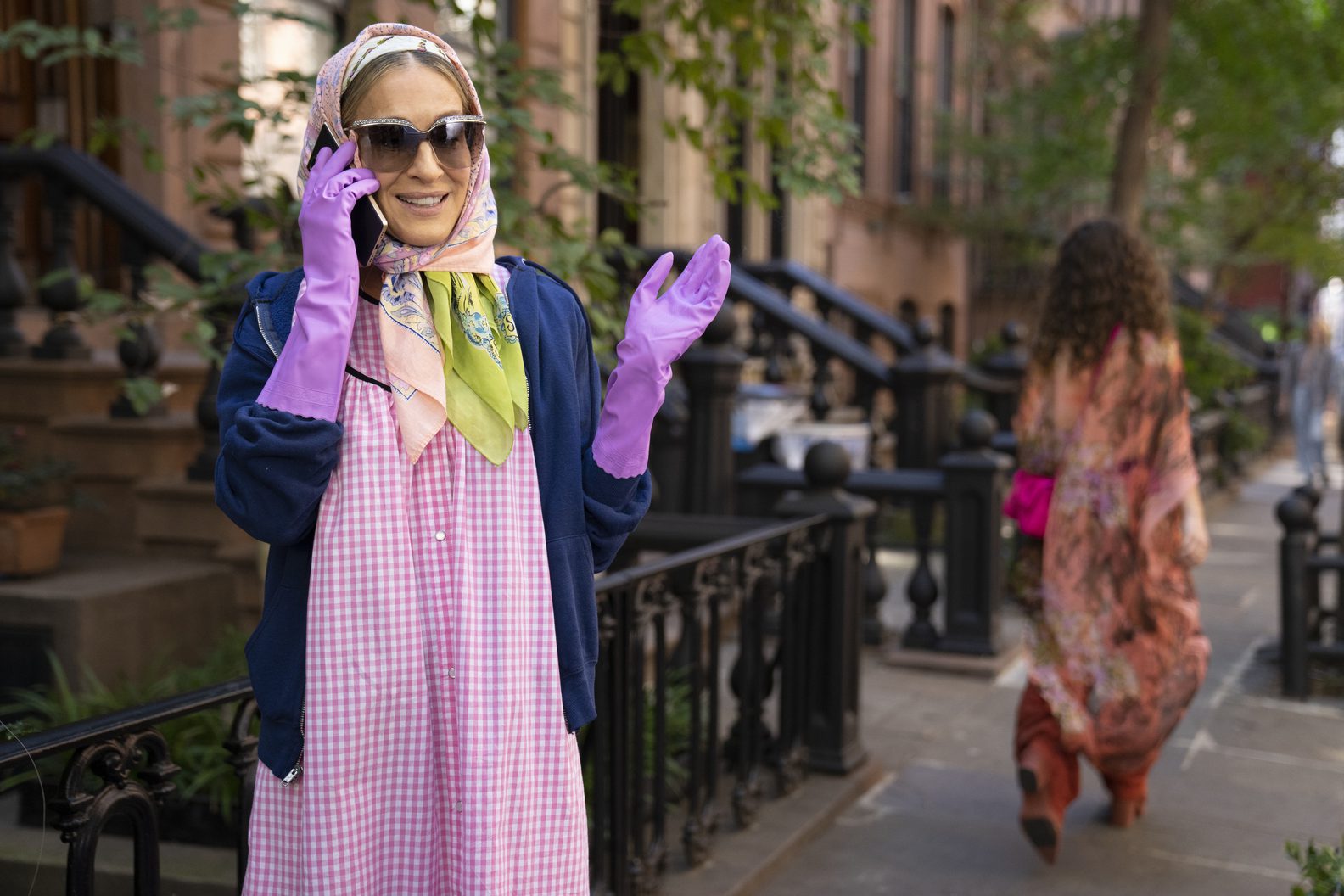
How much do you think the costume design helps bring the stories move forward in relation to what the characters are going through?
Well, you don’t make it up all on your own in a bubble in the fitting room or when you’re in the store. You’ve read the script and the episode, and you know what the actor physically needs, like a raincoat or whatever. For example, Miranda wanted to be very relaxed looking when she was on the couch in that important scene with Steve talking about their marriage. You don’t want anything to pull focus. You really want to set things that are quiet and allow the dialogue to come forward. Unlike using hats or something, where you really want to be the peacock in the scene.
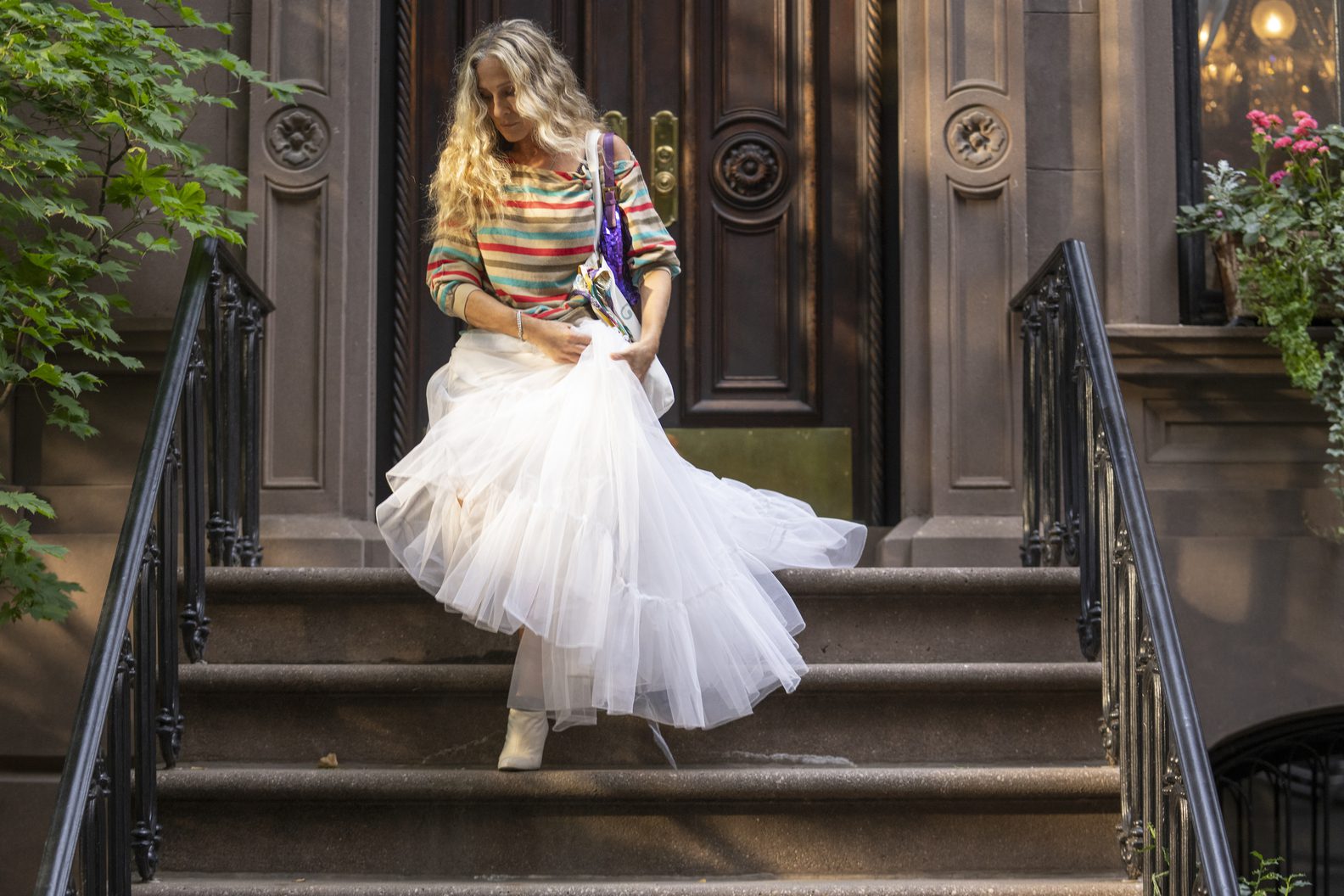
You mentioned the Manolo Blahniks and the Roger belt which were such iconic pieces from the Sex and the City season. Are there any pieces from this show that will have the same impact?
I guess it has to stand the test of time, doesn’t it? There’s always a tutu that people are like, “Ooh, yeah, a crinoline!” People had a lot of different favorites, and I don’t really know what will stand out from this one. It’ll be interesting to see.
Can you talk about how you much you listen to the fans and how that impacts your decision? Do you look at social media?
Oh, the fans, the fans. No, I try not to. I think it’s dangerous. I think it straps you creatively. I think you begin to be afraid of how something is interpreted and I want it to be free. I do not look and when I’ve glanced at it, it was terrifying. People are so mean and unhappy. I just wanted to do beauty. After the pandemic and we’re all at home, no one’s worn shoes or a bra. We’ve been in Zoom clothing. I just wanted to see happiness and beauty and pretty. It was very much like a Roman Colosseum. If you looked on social media, you got the thumbs down kill, or the thumbs up, you may live. It was pretty hardcore. I really stuck my head in the sand.
That’s probably a good thing
I think it’s healthier.
You’ve had such an amazing career. How did you get your break in the industry?
I went to New York [from North Carolina] as a very naive person. I had read an article about this woman named Patricia Field and I’d heard she had a really famous store that was like a nightclub. I felt like a real country bumpkin that had just gotten into town off of the bus with a straw hat on almost. But I went in there my first day in New York and I introduced myself to Pat. She was working that day with Maripol, who was a French stylist who was styling Madonna in 1984. Pat and Maripol were looking at rubber bracelets. And Pat hired me. I started work with her and became dear friends. She carried me along with her when she started styling. I worked very, very hard for her from the very beginning. I think that’s really important. When students ask me that question it’s important to come from the bottom up. I started out counting combat boots on a show that Pat was doing at the time. I wasn’t in the fitting room with high end brands. A lot of kids think that they’ll start out by picking out shoes for Carrie. But I think it’s really important to get a well-rounded education and start wherever you can get in. That’s what I did.
Who inspired you when you were growing up? What were your fashion references from your youth?
I will say that I gravitate, not when I was young, young, I wasn’t one of those people that was sitting on my bed looking, really, at fashion magazines but I looked at makeup and things like that. When I was 10 years old, I wanted my own face mask company. I think as I went to college, I still wasn’t that interested in fashion, and after I graduated from college I went to London, and that is where I saw people dressing for themselves on the street, on the trolley, on the bus. And it was really inspiring because I was into the music scene there. So, I was into fringe things like Siouxsie and the Banshees that have nothing to do with Carrie. But I have to say that with Thierry Mugler passing, I don’t think anybody’s going to come along like that. Those fashion shows are inspirational. I don’t care if they were 30 some years ago. They were ahead of their time. They’re stunning. That’s what influenced me to today, I would say.
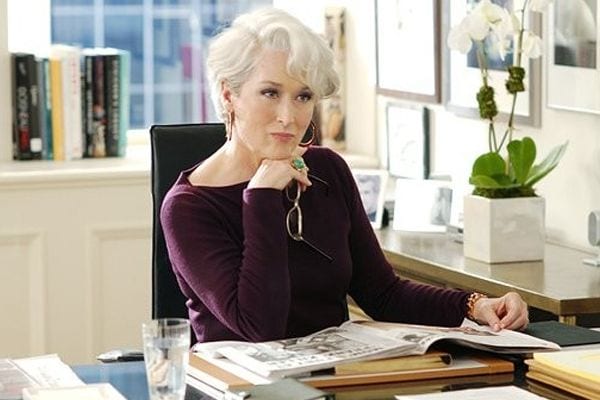
Dressing Meryl Streep for The Devil Wears Prada was probably just as tall a task as dressing Sarah Jessica Parker, if not taller. Can you talk about that experience?
It has to be a highlight of my career with Pat, being in a fitting room with Meryl. I just felt like it was historical for a fashion person. We met with Meryl at her home before she went on a European vacation. She looked at both of us and said, “I will lose 15 pounds before I come back.” We were like, “We don’t believe you because you’re going to Italy.” But she did. It really helped because we were pulling so many samples for her. So, she had trimmed down. I can compare it to shopping for Carrie. You really have to go deep so that you can present something that really isn’t a trend. Pat and I spent an entire day at a Donna Karan archive warehouse out in New Jersey and Annie [Hathaway] wore a lot of it and Meryl did too. It’s unidentifiable because it’s timeless and it’s classic. I think The Devil Wears Prada really holds up.


